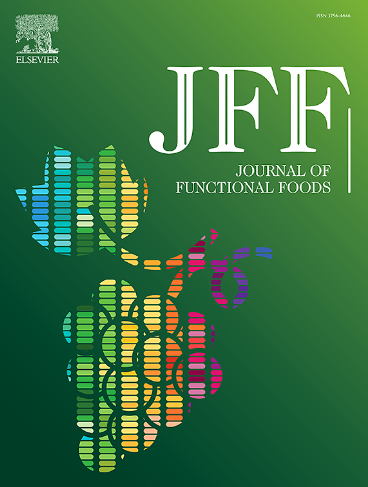甜菜碱对肺动脉高压治疗的影响及基于 PERK-eIF2α 信号通路的机制
IF 3.8
2区 农林科学
Q2 FOOD SCIENCE & TECHNOLOGY
引用次数: 0
摘要
PAH的特征是PASMCs过多和对细胞凋亡的抵抗。ERS驱动肺血管重构。枸杞甜菜碱具有抗多环芳烃作用,可口服给人服用,剂量为100、200、400 mg/kg时对人和动物均无明显毒性。然而,ERS之间的联系仍未被探索。本研究探讨甜菜碱对多环芳烃的保护机制。SD大鼠单次皮下注射诺他林诱导PAH,并给予甜菜碱和avenate西地那非21 d。甜菜碱显著改善超声心动图、血流动力学和病理形态学的异常变化。甜菜碱抑制PDGF-BB诱导的HPASMCs增殖。甜菜碱抑制GRP78蛋白表达,提高肺组织p-PERK蛋白表达。它还显著上调了HPASMCs中PERK和eIF2α的磷酸化。在PERK siRNA敲除后,甜菜碱恢复PERK和eIF2α磷酸化。甜菜碱激活PERK- eif2 α,减轻ERS,并靶向PERK,作为潜在的PAH治疗。本文章由计算机程序翻译,如有差异,请以英文原文为准。

Effect of betaine on pulmonary arterial hypertension treatment and mechanisms based on the PERK-eIF2α signal-pathway
PAH is marked by excessive PASMCs and resistance to apoptosis. ERS drives pulmonary vascular remodeling. Betaine from Lycium barbarum L. protects against PAH, is orally available to humans and shows no obvious toxicity for humans and animals at 100, 200, 400 mg/kg. However, the ERS link remains unexplored. This study investigates betaine's PAH protective mechanisms. SD rats received a single subcutaneous injection of notaline to induce PAH and received betaine and sildenafil avenate for 21 d. Betaine significantly improved abnormal changes in echocardiography, hemodynamics, and pathomorphology. Betaine inhibited the proliferation of HPASMCs induced by PDGF-BB. Moreover, betaine suppressed the protein expression of GRP78 and improved the protein expression of p-PERK in rat lungs. It also significantly upregulated PERK and eIF2α phosphorylation in HPASMCs. Upon PERK siRNA knockdown, betaine restores PERK and eIF2α phosphorylation. Betaine activates PERK-eIF2α, mitigates ERS, and targets PERK, as a potential PAH therapy.
求助全文
通过发布文献求助,成功后即可免费获取论文全文。
去求助
来源期刊

Journal of Functional Foods
FOOD SCIENCE & TECHNOLOGY-
CiteScore
9.60
自引率
1.80%
发文量
428
审稿时长
76 days
期刊介绍:
Journal of Functional Foods continues with the same aims and scope, editorial team, submission system and rigorous peer review. We give authors the possibility to publish their top-quality papers in a well-established leading journal in the food and nutrition fields. The Journal will keep its rigorous criteria to screen high impact research addressing relevant scientific topics and performed by sound methodologies.
The Journal of Functional Foods aims to bring together the results of fundamental and applied research into healthy foods and biologically active food ingredients.
The Journal is centered in the specific area at the boundaries among food technology, nutrition and health welcoming papers having a good interdisciplinary approach. The Journal will cover the fields of plant bioactives; dietary fibre, probiotics; functional lipids; bioactive peptides; vitamins, minerals and botanicals and other dietary supplements. Nutritional and technological aspects related to the development of functional foods and beverages are of core interest to the journal. Experimental works dealing with food digestion, bioavailability of food bioactives and on the mechanisms by which foods and their components are able to modulate physiological parameters connected with disease prevention are of particular interest as well as those dealing with personalized nutrition and nutritional needs in pathological subjects.
 求助内容:
求助内容: 应助结果提醒方式:
应助结果提醒方式:


